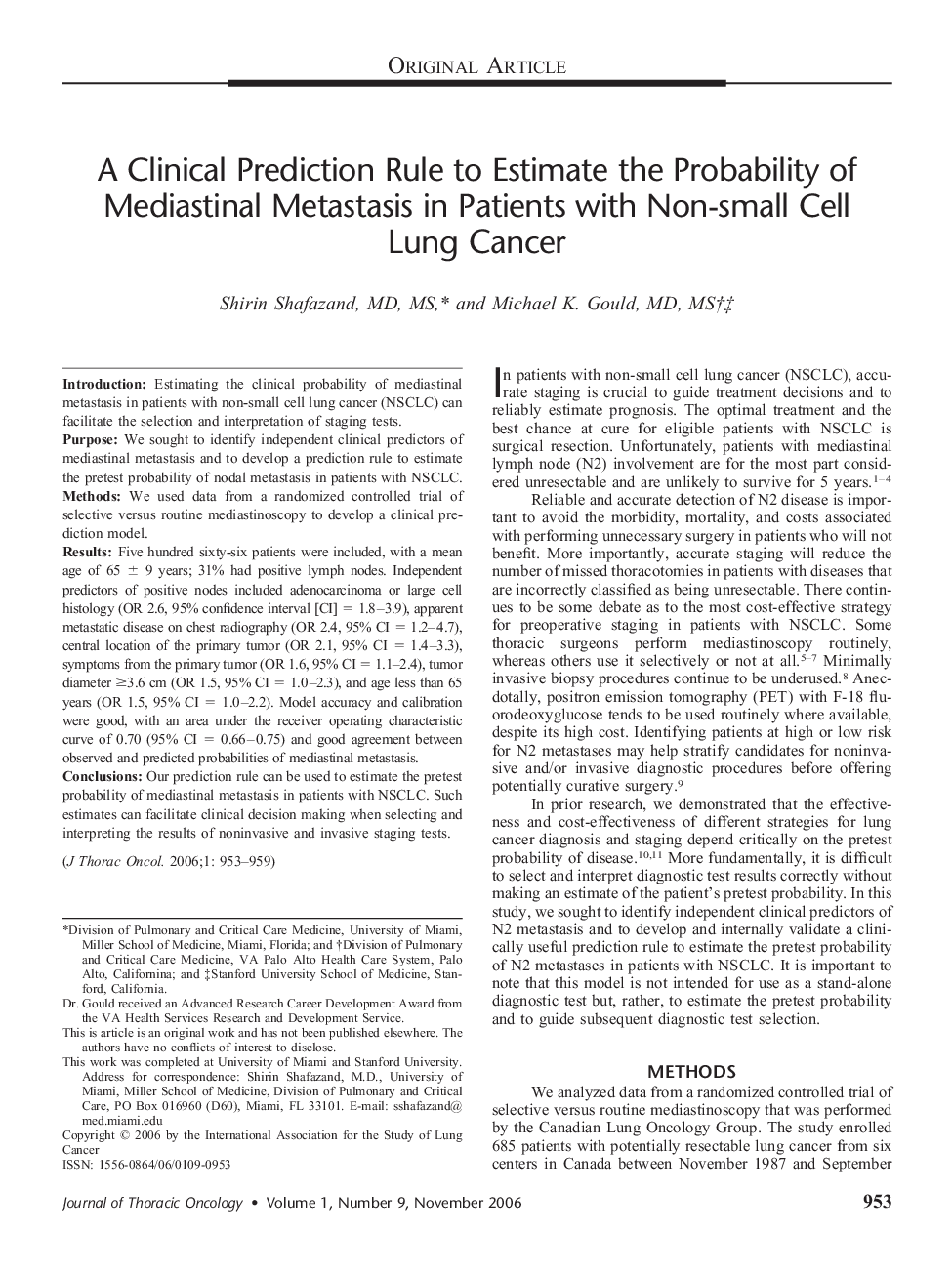| Article ID | Journal | Published Year | Pages | File Type |
|---|---|---|---|---|
| 3991673 | Journal of Thoracic Oncology | 2006 | 7 Pages |
IntroductionEstimating the clinical probability of mediastinal metastasis in patients with non-small cell lung cancer (NSCLC) can facilitate the selection and interpretation of staging tests.PurposeWe sought to identify independent clinical predictors of mediastinal metastasis and to develop a prediction rule to estimate the pretest probability of nodal metastasis in patients with NSCLC.MethodsWe used data from a randomized controlled trial of selective versus routine mediastinoscopy to develop a clinical prediction model.ResultsFive hundred sixty-six patients were included, with a mean age of 65 ± 9 years; 31% had positive lymph nodes. Independent predictors of positive nodes included adenocarcinoma or large cell histology (OR 2.6, 95% confidence interval [CI] = 1.8–3.9), apparent metastatic disease on chest radiography (OR 2.4, 95% CI = 1.2–4.7), central location of the primary tumor (OR 2.1, 95% CI = 1.4–3.3), symptoms from the primary tumor (OR 1.6, 95% CI = 1.1–2.4), tumor diameter ≥3.6 cm (OR 1.5, 95% CI = 1.0–2.3), and age less than 65 years (OR 1.5, 95% CI = 1.0–2.2). Model accuracy and calibration were good, with an area under the receiver operating characteristic curve of 0.70 (95% CI = 0.66–0.75) and good agreement between observed and predicted probabilities of mediastinal metastasis.ConclusionsOur prediction rule can be used to estimate the pretest probability of mediastinal metastasis in patients with NSCLC. Such estimates can facilitate clinical decision making when selecting and interpreting the results of noninvasive and invasive staging tests.
